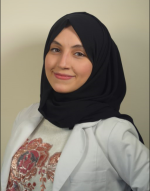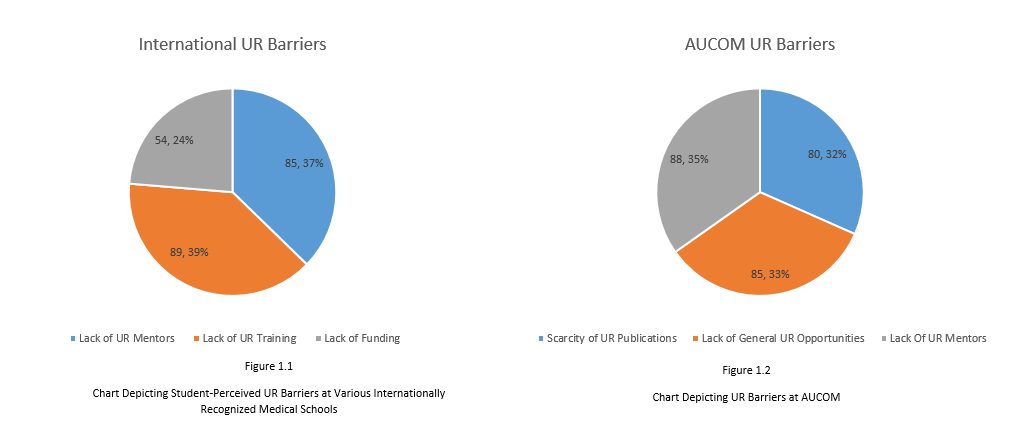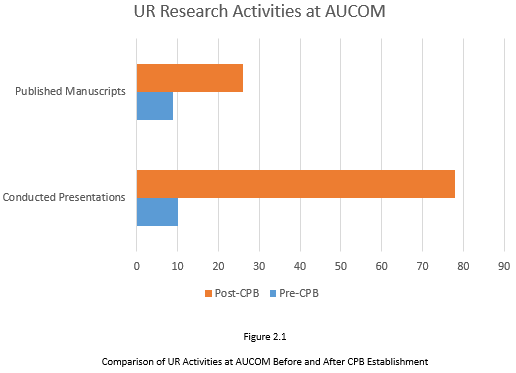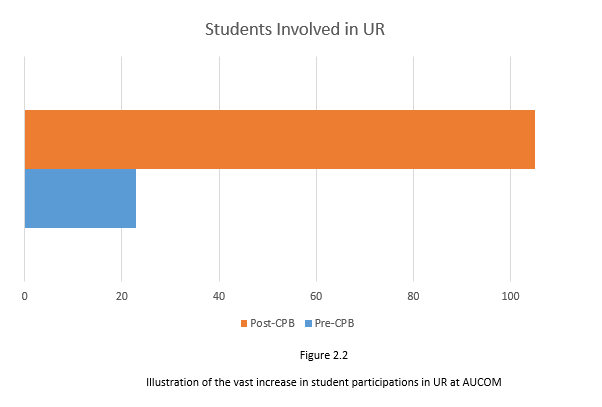



Theme
Undergraduate Research / Curricular Environments
INSTITUTION
Al Faisal University
One of the most recognized methods of knowledge acquisition and improvement is through meticulous research. Research, in turn, is never complete without knowledge dissemination; within the field of medicine, this is usually accomplished either through publication or through the exchange of ideas and innovations that are inherent to most recognized medical conferences. Research at the undergraduate medical level has emerged as a vital asset that greatly contributes to the enhancement of numerous fields throughout medicine.
Undergraduate Research (UR) at Alfaisal University’s College of Medicine (AUCOM) has had reasonable success, but has been hindered by significant barriers that have prevented many eager students from engaging in various UR activities. Some of the most important barriers, as perceived by students, to effective UR at AUCOM included: lack of an adequate number of UR mentors, lack of general UR opportunities, and the scarcity of UR publications in peer- reviewed journals by AUCOM students. The number of students involved in UR and consequent publications did not reflect the potential of our diverse student body.
This paper illustrates how we were able to overcome most UR barriers apparent within our institution (AUCOM) and, therefore, maximize UR opportunities for all students who wish to contribute to this essential component of global medical research. We refer to this structured approach as the: “Collegial Peer-Review Board (CPB)”.

CPB Establishment
The CPB involves the recruitment of a select group of senior medical students who are renowned for their expertise in the field of UR as evidenced by their various publications in respectable peer-reviewed journals. This select group of students further formulates smaller groups of 4-5 junior medical students, known as Research Interest Groups (RIGs), which are eager but lack the sufficient knowledge and expertise to conduct quality UR. The recruited senior medical students volunteer to mentor their junior kin and guide them through the tedious process of UR, starting with the study design, data collection and analysis, manuscript authoring and consequent publication or international conference presentation. Expert faculties also volunteer to evaluate student-produced research in conjunction with the senior medical student mentors; both form an integral part of the CPB.


The CPB began its pilot run during the 2014-2015 academic year. Since the begining of year 2014: 26 manuscripts were accepted for publication, 78 international re- search presentations were conducted, and over 105 medical students were in- volved in some form of UR research out of a total of 700 AUCOM students. These numbers show a drastic improvement on the previous year’s total UR output.

The CPB established at AUCOM was designed to overcome the main hindrances that barred its students from actively participating in UR. To address the inade- quate number of faculty mentors, senior medical students were enlisted to form multiple RIGs and provide greater access to UR activities for all willing students. Knowledge and experience pertaining to all aspects of UR were poured into our vast student population through their own senior kin, who, in turn, helped signifi- cantly increase the number of publications produced by our student body.
In conclusion, we believe that the preliminary results shown, both before and after the establishment of the CPB, illustrate the success that this program has had in overcoming UR barriers at AUCOM. We hope to further its success as we seek to continuously improve upon the core components that have led to this enhanced research output, and future studies will hopefully attest to this. Fur- thermore, we recommend that institutions facing similar hindrances to UR apply the CPB approach and study its results in optimizing research output. We look forward to learning about these experiences outside the confines of our college in the hopes of dissolving most UR barriers that are apparent at many medical schools across the globe.
1. Saudi Pharmaceutical Journal. Perceptions, attitudes and practices toward research among senior medical students. K Ghamdi, N Moussa, D ElEssa, N AlOthimeen, Adwa Alsaud. Saudi Pharmaceutical Journal. Vol22, April 2014. Retrieved Sept. 18, 2014.
2- PubMed. Publication practices of medical students at British medical schools: experience, attitudes and barriers to publish. Griffin MF, Hindocha S. Med Teach 2011; 33(1). Retrieved Sept. 18, 2014.
3- Oliveira, C.C., et al., Undergraduate research in medical education: a descriptive study of students' views. BMC Med Educ, 2014. 14: p. 51. 4- Nikkar-Esfahani, A., A.A. Jamjoom, and J.E. Fitzgerald, Extracurricular participation in research and audit by medical students: opportuni-
ties, obstacles, motivation and outcomes. Med Teach, 2012. 34(5): p. e317-24.
5- PubMed. Student peer review decisions on submitted manuscripts are as stringent as faculty peer reviewers. JW Navalta, Lyons TS. Adv
Physiol Edu. 2010 Dec 34 (4): 170-3. Retrieved Sept. 18, 2014.
 Send Email
Send Email